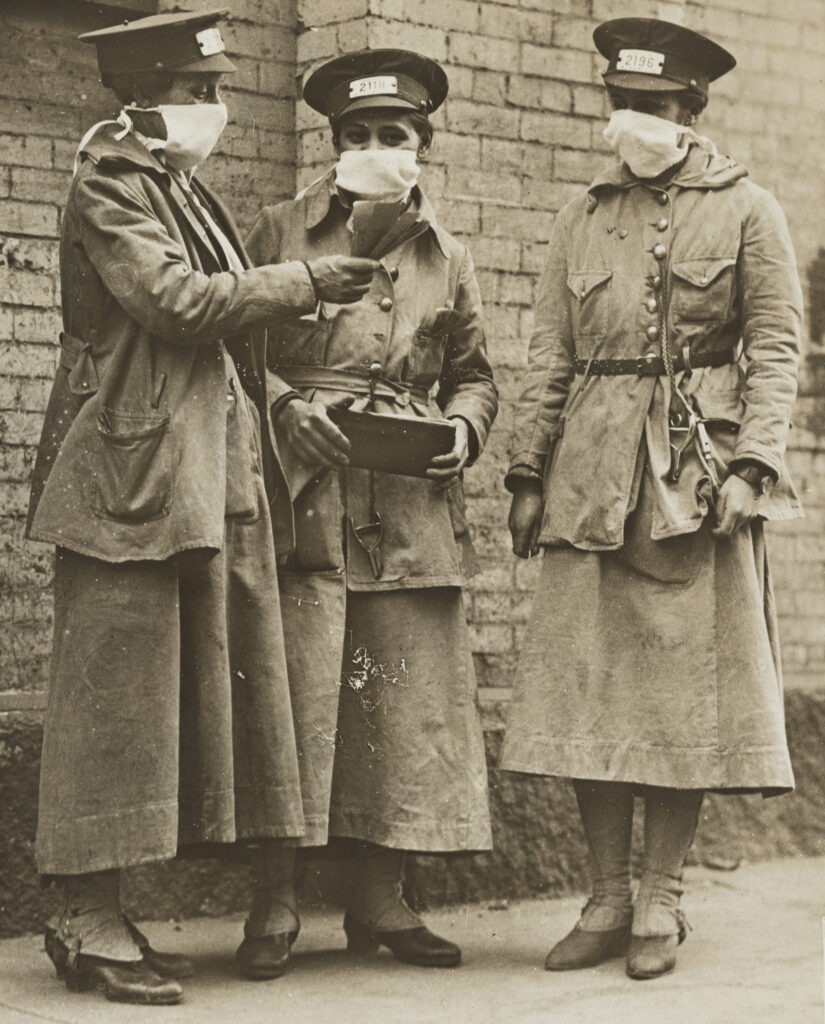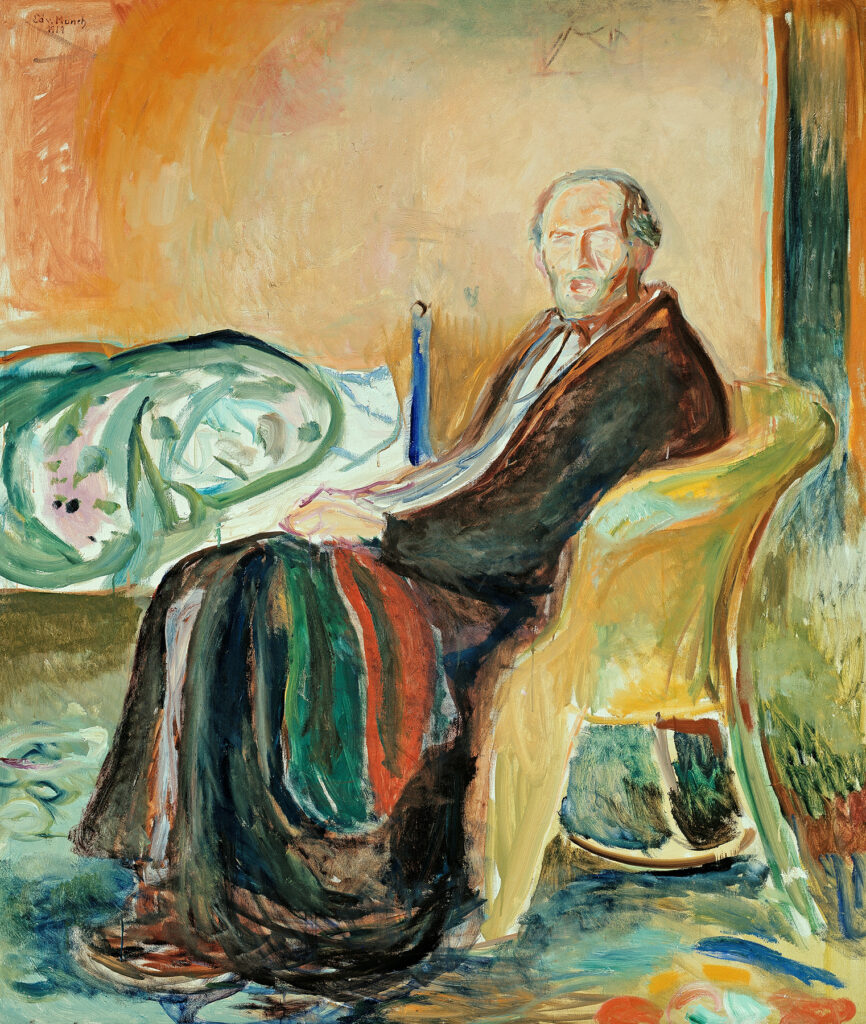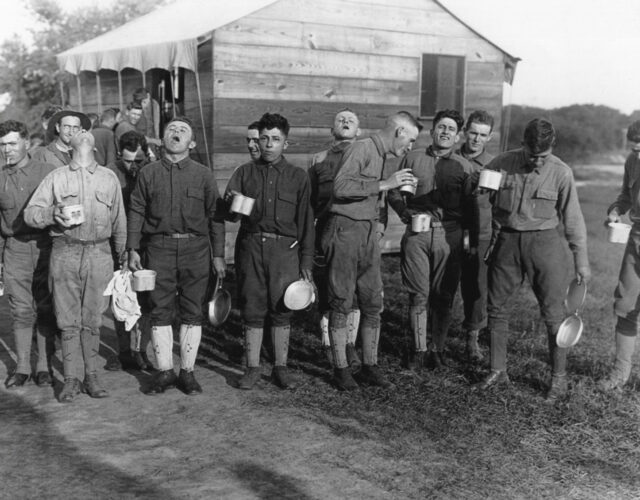Laura Spinney. Pale Rider: The Spanish Flu of 1918 and How It Changed the World. PublicAffairs, 2017. 352 pp. $28.
“When asked what was the biggest disaster of the twentieth century, almost nobody answers the Spanish flu,” writes Laura Spinney in the first few pages of her book Pale Rider: The Spanish Flu of 1918 and How It Changed the World. In a century that witnessed two world wars, her statement is bound to sound hyperbolic, which is exactly the point.
Spinney pulls the global pandemic from the footnotes of history. “In terms of single events causing major loss of life, it surpassed the First World War (17 million dead), the Second World War (60 million dead), and possibly both put together. It was the greatest tidal wave of death since the Black Death, perhaps in the whole of human history.” This event, she argues, created the real “Lost Generation,” borrowing the phrase coined by Gertrude Stein and made famous by Ernest Hemingway for the disillusioned expats who flocked to Paris after World War I.
But how did we forget about the flu? We can blame our forgetfulness partially on the epidemic’s timing: it occurred during the final year of World War I. Add to that our inadequate understanding of what was causing the illness, which left doctors powerless. But the larger issue, as Spinney makes clear, was the lack of documentation in the places hit hardest, such as China and India. Only in the past 20 years have researchers updated old information and mined obscure journals for insight, and now that we can pore over the data, the mortality rate was far more dismal than anyone imagined. “One in three people on earth had fallen ill. One in ten of those—perhaps as many as one in five—had died,” she writes. India alone lost an estimated 18 million.
Spinney looks beyond Europe and North America, incorporating meticulously sourced anecdotes where data are lacking. In Rio de Janeiro we hear the tale of a Carnival reveler named Jamanta, who drove a tramcar through the city at night, picking up the dead and bringing them to the churchyard where “gravediggers couldn’t dig fast enough.” In Mashed, Persia (now Iran), we encounter some 45,000 infected people in a city with fewer than 100 hospital beds. When the sick turned to their hakims, or herb doctors, for help, they were given dietary advice and prayers. In Odessa, Russia (now Ukraine), doctors were tracking bouts of flu, cholera, and typhus in September 1918 and were urging the public to avoid germs by ventilating their homes. Some citizens opted for the ritualistic over the rational, organizing “black weddings”—marriage ceremonies performed in a cemetery—thought to ward off lethal epidemics.

The picture that Spinney captures with this wider lens is fascinating, and none of these examples are meant to disparage either the physicians or the victims. In her steady, journalistic style the author reminds us that this was a world still on the brink of modernity; illiteracy was high, antibiotics did not exist, and carrier pigeons were still used in some areas for long-distance communication. While germ theory was largely accepted, viruses, such as the one that caused the Spanish flu, were still a mystery, leaving some people disillusioned by professionalized medicine. As the New York Times stated on October 17, 1918, “Science has failed to guard us.” Eleven days later the Times of London reiterated that sentiment.
Spinney describes the early days of the flu outbreak, when the highly infectious disease seemed to appear out of nowhere and killed indiscriminately, usually within days of exposure to the coughs and sneezes of an infected person. Sufferers would first note a sore throat, fever, and some trouble breathing, then a reddish flush on their faces. If the flush turned purple or blue, the prognosis was grim: the body’s extremities would turn black, and blood and other fluids would flood into the lungs. Most victims died of pneumonia, as lesions caused by the flu virus in the lining of the respiratory tract made patients vulnerable to bacterial infection.
Spinney provides a tidy summary of the prevailing theories about the origin of the Spanish flu, which is still uncertain today. One thing is certain: “The Spanish flu did not start in Spain.” That misnomer is a “historical wrong” based on poor reporting and exacerbated by political machinations. In reality patient zero—the first officially recorded case—was U.S. Army cook Albert Gitchell, who checked into the infirmary at Camp Funston in Kansas on March 4, 1918, with flu-like symptoms. More recently, some experts have turned their attention to a January 1918 outbreak of something that might have been flu (not a reportable sickness at the time) in the rural county from where Gitchell had recently hailed, speculating that he “unwittingly carried the virus into the midst of the American war machine, whence it was exported to the rest of the world.”
The second theory is more directly associated with wartime chaos and posits that the source of the virus was a hospital camp in Étaples, France. In December 1916 “something very like flu broke out at the camp. . . . They called it ‘purulent bronchitis’ and noted that it was characterised by a dusky blue hue to the face.” The victims’ congested and inflamed lungs were another possible clue, and similar symptoms were seen in Rouen and across the English Channel in some military barracks in early 1917.
A third theory holds that this strain of influenza arose in China, known “as the sick man of Asia,” Spinney writes, because it had long been plagued by, well, several varieties of plague. An epidemic of respiratory disease broke out in Shanxi, in northern China, in December 1917, which some believed to be pneumonic plague while others hypothesized it was “the first manifestation of the Spanish flu.” Xenophobia may have played a role in the early iterations of this accusation, with Americans quite willing to point the finger elsewhere, principally far eastward.
All these hypotheses were no more than guesswork because scientists then had no way to identify viruses. In 1892, the year “Russian flu” swept through Europe, German bacteriologist Richard Pfeiffer announced he had isolated the bacterium responsible for the flu—Haemophilus influenzae. Pfeiffer’s bacillus turned up in the lung tissue of many flu victims, but it did not appear in all of them. The real culprit remained invisible: at roughly 20 times smaller than a bacterium, it couldn’t be seen through a microscope.
A distraught public blamed immigrants for carrying germs and criticized physicians for offering no cure beyond aspirin, quinine, and castor oil. To some it seemed like a punishment from God.
Three distinct waves of Spanish flu made landfall in 1918 on every inhabited continent. The first wave, in spring, was mild; the second, in late summer and autumn, was deadly; and the third lingered in pockets around the globe from late 1918 into early 1919. Doctors were stumped as to why each wave differed in potency, but again it was not something the science of the day could puzzle out. Researchers injected themselves with the filtered (bacteria-free) blood of a flu-infected patient and coated their throats with filtered sputum. If symptoms developed, they reasoned that something else (a virus, possibly) was the causative agent. But these experiments were often compromised by the flu’s sheer communicability: it was impossible to know how the researchers had picked up the bug. And if they had already survived a bout of the flu, they were likely immune.
Not until 1931 did Richard Shope confirm that flu is caused by a virus. Two years later a lab ferret sneezed in the face of a British scientist, who then contracted the ferret’s flu. “From the humble beginnings of a ferret sneeze,” Spinney writes, “the vast and complex biology of influenza began to unfold.” Two further developments—the understanding that there are different varieties of flu and that the virus needs a host cell to reproduce—helped lead to the first mass flu vaccine in 1944.

The scale of the epidemic was enormous: one in three people on Earth got sick, including Norwegian artist Edvard Munch, who documented the course of his illness in a series of paintings and sketches, including Self-Portrait with the Spanish Flu (1919).
Then, as now, the flu vaccine was not universally effective. It seems dreadfully apropos that the 2017–2018 flu season—the centennial of the Spanish flu—also proved unusually virulent. Of course the numbers of those infected and those who perished then and now are vastly different (millions as opposed to thousands), owing to the work of scientists past and present. But merely keeping up with the strains of influenza—the H’s and the N’s (proteins that usher the virus into our cells)—isn’t enough. New versions of each pop up, and vaccines must be prepared at the tail end of one season for the next season’s predicted germs. According to news reports, the 2018 vaccine was based on a brew of H1N1, H3N2, and B/Victoria lineage strains: not a bad guess, but H3N2 rapidly mutates, and this past year’s strain was worse than usual.
Researchers finally sequenced the genes of the Spanish flu virus in the late 1990s after finding a tissue sample infected with that strain in the collection of the U.S. Armed Forces Institute of Pathology in Washington, D.C. The virus’s RNA had been damaged by its long bath in formaldehyde, so only fragments of the tissue could be sequenced. But it was a start. One of the biggest breakthroughs in understanding how the virus operates came in 2005 after another sample was excavated from mass graves dug in the Alaskan permafrost. (Alaska was badly hit by the Spanish flu, with 85% of the population in one area infected and many dying.) With this new sample, researchers were finally able to reconstruct the Spanish flu’s complete genetic code. They found that the virus was particularly good at getting around the body’s first line of defense, interferon, a substance secreted by the immune system to hinder viral reproduction. The flu virus can actually trick the body “by concealing the evidence that it has hijacked the cell’s reproductive machinery, so that interferon can’t shut it down.” Once the host body caught on, it mobilized its second defense, a blast of cytokines (small proteins produced by immune cells), which results in inflammation. If the host body’s response was overzealous, causing what some have described as a “cytokine storm,” says Spinney, it “caused more damage than the virus it was intended to destroy.” Researchers also discovered that the virus had undergone a crucial change between the first and second waves, becoming more effective at sickening humans and less effective in birds, its earlier hosts.
In 2011 the case of a two-year-old suffering from acute respiratory distress syndrome shed more light on the interferon-cytokine response. The toddler was admitted to the intensive care unit at the Necker Hospital for Sick Children in Paris. After saving her life, a doctor there, Jean-Laurent Casanova, curious as to why an otherwise healthy child might be felled by seasonal flu, sequenced her genome. He found that the girl had a genetic defect that prevented her immune system from making interferon, which then paved the way for “a massive inflammatory response similar to the one pathologists saw in 1918.” (This same genetic defect is found in one person in every 10,000, and such people, when unvaccinated, are more likely to die from a seasonal flu.)
The next time friends bellyache about getting their annual flu shot, give them a copy of this book: to read about the distressingly dynamic nature of the flu virus and its ability to jump from one species to another is to be schooled in the realness of science. One example: experts are closely monitoring the H5N1 flu, a subtype that made headlines in 1997 when a toddler in Hong Kong caught it from a bird and died. Some predict this subtype will set off the next pandemic. Will it be as destructive as the Spanish flu? Probably not, as we now have vaccines to stem its spread and antibiotics to fight the secondary bacterial infections. Then again, if just breathing is a significant mode of influenza transmission, as is likely, the next one could go viral faster than we realize. If you’ve read Pale Rider, you might just be better prepared for it.




